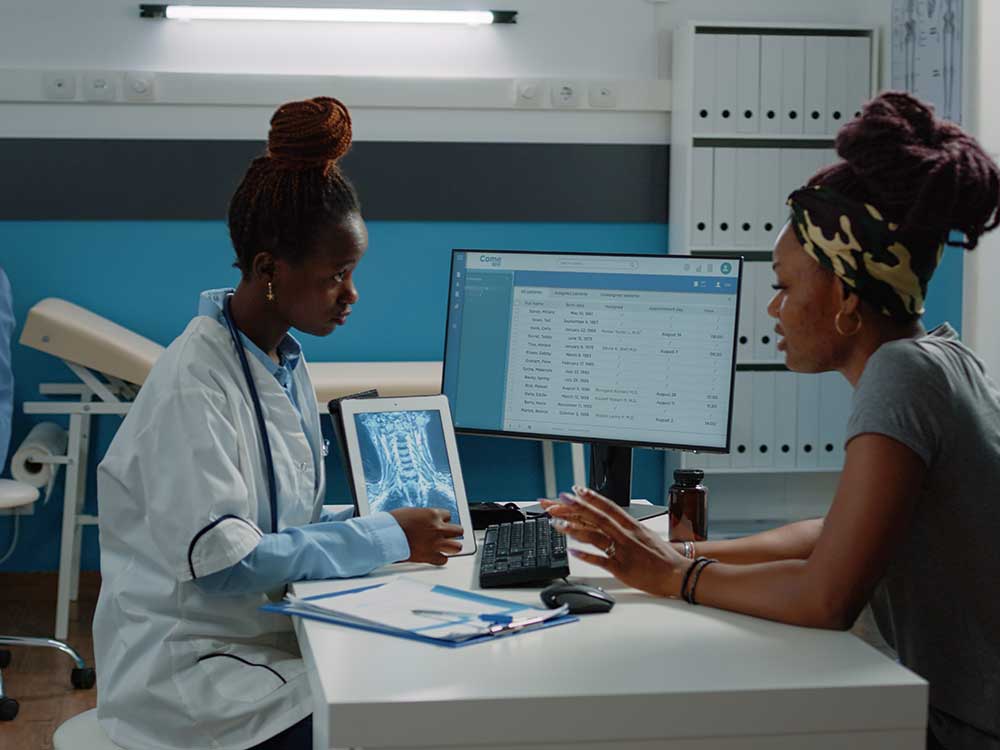A Complete Guide to Medical Administration Certifications and Certifications
A Complete Guide to Medical Administration Certifications and Certifications
Blog Article
Finest Practices in Medical Management for Improving Efficiency and Minimizing Expenses
In the ever-evolving landscape of medical care, the pursuit of finest techniques in medical administration is critical for improving effectiveness and suppressing expenses. By incorporating sophisticated innovations such as electronic health records and telemedicine, health care service providers can improve operations and enhance patient care. Innovation alone is not a cure all; enhancing source allowance and promoting joint interaction among care teams are just as crucial. As organizations make every effort to stabilize top quality and price, what techniques should be focused on to attain these double goals? The answers to these inquiries hold the key to a more lasting healthcare system.
Leveraging Advanced Technology
In today's rapidly advancing healthcare landscape, leveraging sophisticated technology is no longer optional but important for efficient clinical management. The combination of digital remedies into healthcare systems has actually transformed the means facilities operate, enhancing procedures and boosting individual treatment. Electronic Health And Wellness Records (EHRs) are crucial, giving detailed person information that can be accessed quickly by authorized employees, thus minimizing redundancy and decreasing mistakes. By systematizing person details, EHRs eliminate the demand for troublesome documents and help with smooth interaction amongst health care service providers.
Telemedicine is an additional technical advancement that has revolutionized client communication. It supplies convenience for both clients and medical care professionals by allowing remote assessments, which can reduce the need for in-person gos to and optimize appointment organizing. Additionally, telehealth systems can extend health care access to rural or underserved locations, linking gaps in treatment delivery.
In addition, the use of Artificial Intelligence (AI) and artificial intelligence is ending up being significantly common in predictive analytics, permitting for early discovery of potential health and wellness problems and more educated decision-making. These technologies, when incorporated effectively, can boost diagnostic precision and individualize person treatment plans, ultimately resulting in improved health care results and functional efficiency.
Optimizing Source Appropriation
By strategically handling resources such as workers, equipment, and finances, medical care centers can considerably boost their functional efficiency, improve client outcomes, and minimize unnecessary expenditures. The first step in enhancing source appropriation involves performing a thorough assessment of current assets and identifying locations where sources might be underutilized or exhausted.
Prioritizing resource allotment based upon person demands and service needs is important. This entails straightening sources with high-demand locations, such as emergency situation care or specialized treatments, to make certain timely and efficient individual treatment. Executing versatile staffing models can likewise enhance labor sources by readjusting employees allocation in feedback to fluctuating client quantities. In addition, embracing telemedicine and various other technological remedies can minimize physical resource constraints by supplying alternative avenues for patient-provider communications.
Funds must be thoroughly monitored and designated with tactical foresight to sustain both temporary functional needs and lasting institutional objectives. This consists of investing in training programs that enhance staff competencies and taking on energy-efficient techniques that minimize functional prices (medical administration). Inevitably, a maximized source allocation approach fosters a lasting healthcare setting that is receptive, reliable, and monetarily prudent
Streamlining Workflow Procedures
When medical care centers objective to enhance functional performance, enhancing workflow processes becomes a crucial focus. Effective operations reduce redundancy, get rid of unneeded actions, and improve coordination among health care professionals. This method not only accelerates service shipment but also enhances the high quality of person treatment.

Next, technology integration plays a substantial function in simplifying operations. Executing digital health records (EHRs) and electronic medical professional order entry (CPOE) systems minimizes paperwork, reduces human mistake, and guarantees info is available to all pertinent employees. In addition, leveraging telemedicine systems can enhance individual appointments and follow-ups, lowering the pressure on physical infrastructure.

Ultimately, structured process result in cost reductions and boosted individual complete satisfaction, fostering an extra lasting healthcare atmosphere.
Enhancing Data Management
Structure upon streamlined process, maximizing information administration comes to be an essential component beforehand medical care management. Effective information monitoring systems are vital for preserving precise individual records, enhancing decision-making, and making sure conformity with regulatory standards. By executing robust data monitoring options, healthcare facilities can boost the top quality of individual treatment while all at once minimizing operational costs.
One trick facet of enhancing data administration is the integration of advanced digital wellness document (EHR) systems. These systems facilitate the seamless exchange of patient details across various divisions, lowering duplication of tests and reducing errors. A properly designed EHR system sustains information analytics, enabling doctor to recognize fads and make informed choices regarding patient treatment.
Moreover, guarding patient information is vital. Taking on extensive cybersecurity measures, including file encryption and normal audits, ensures the honesty and confidentiality of sensitive details. This not only protects people yet also keeps the establishment's track record.
Investing in team training find more is an additional important factor. Educating health care experts on information administration techniques boosts their capability to successfully make use of innovation, leading to enhanced person end results. Finally, enhancing information administration through innovative innovation and detailed training is important for accomplishing efficiency and price reduction in clinical management.
Fostering Collaborative Interaction
A crucial part ahead of time clinical management is promoting collaborative communication among healthcare specialists. Efficient communication is extremely important for making sure smooth person care, enhancing treatment results, and lessening errors. By urging open dialogue and coordination throughout multidisciplinary teams, healthcare organizations can improve their operational efficiency and minimize unneeded prices.
Central to this approach More Bonuses is the combination of communication modern technologies such as electronic health and wellness documents (EHRs) and safe and secure messaging systems, which promote the rapid exchange of crucial person details. These tools enable medical care suppliers to gain access to and share information in actual time, guaranteeing that all staff member are educated and straightened in their decision-making why not check here processes. Additionally, routine team meetings and interdisciplinary rounds can additionally promote a society of cooperation and responsibility.
Educating programs concentrated on boosting interaction skills are additionally necessary. Ultimately, promoting joint interaction leads to improved medical care distribution and price financial savings.

Final Thought
Incorporating innovative modern technology, such as electronic health and wellness documents and telemedicine, together with maximized resource allotment and streamlined operations procedures, is vital for enhancing effectiveness in medical management. Effective information administration and fostering collective interaction among health care teams are essential for minimizing redundancies and improving treatment quality. By focusing on precautionary treatment and involving in top quality improvement efforts, medical care companies can accomplish substantial cost savings and boosted person results, thus making sure lasting medical care delivery in a progressively intricate environment.
Report this page